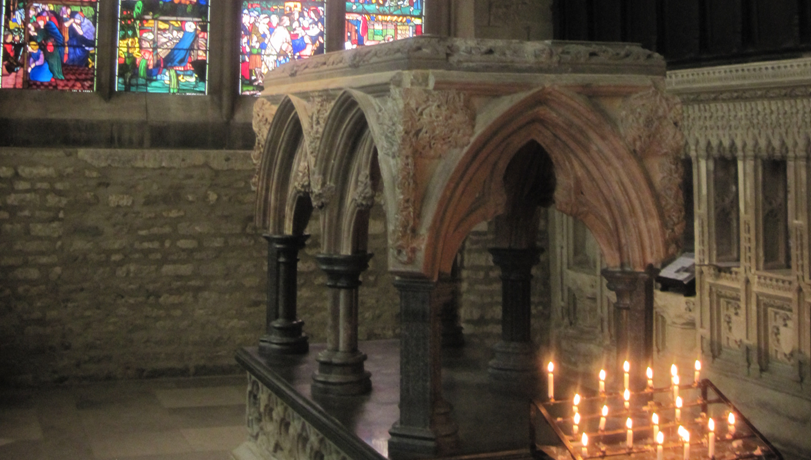The Synod of Whitby in 663-664 had caused Northumbria's Celtic bishops to return into Scotland, leaving the North without episcopal oversight. After Tuda, Wilfrid, one of the supporters for the Roman Customs in the Synod, was appointed as bishop, but went to France to seek consecration because of a shortage of bishops in Britain and did not return for 2 years. Chad in the mean time was appointed bishop because it seemed that Wilfrid was going to stay in Gaul. But he returned and at this time Theodoric of Tarsus had been appointed Archbishop of Canterbury by the Patriarch of Rome. Theodoric traveled to Northumbria quickly to settle the dispute between Wilfrid and his new Roman rites and observances and the Celtic, more orthodox ways of Chad and Oswiu. Chad was ordered to step down, which he did, but soon after, the king of a still pagan Mercia, Wulfhere asked for a bishop and Chad was appointed. He established his episcopal seat in Lichfield where he built a monastery dedicated to St. Mary. He spent the rest of his life establishing monasteries and churches all over Mercia until his death on 2 March 672. Chad was venerated as a saint immediately following his death, and a cult centered in Lichfield flourished through the Middle Ages. The Cathedral at Lichfield marks his shrine with an Icon and continues to remember his feast.
Saints, Pilgrimage, Liturgy, Art, Music, Tradition, Faith, the Gospels and the Apostolic Church; Our Devotion from the Resurrection,to the Middle Ages, to Now +

Shrine of St. Frideswide, Christ Church Cathedral Oxford.
Monday, March 5, 2012
St. Chad of Lichfield, March 2
The Synod of Whitby in 663-664 had caused Northumbria's Celtic bishops to return into Scotland, leaving the North without episcopal oversight. After Tuda, Wilfrid, one of the supporters for the Roman Customs in the Synod, was appointed as bishop, but went to France to seek consecration because of a shortage of bishops in Britain and did not return for 2 years. Chad in the mean time was appointed bishop because it seemed that Wilfrid was going to stay in Gaul. But he returned and at this time Theodoric of Tarsus had been appointed Archbishop of Canterbury by the Patriarch of Rome. Theodoric traveled to Northumbria quickly to settle the dispute between Wilfrid and his new Roman rites and observances and the Celtic, more orthodox ways of Chad and Oswiu. Chad was ordered to step down, which he did, but soon after, the king of a still pagan Mercia, Wulfhere asked for a bishop and Chad was appointed. He established his episcopal seat in Lichfield where he built a monastery dedicated to St. Mary. He spent the rest of his life establishing monasteries and churches all over Mercia until his death on 2 March 672. Chad was venerated as a saint immediately following his death, and a cult centered in Lichfield flourished through the Middle Ages. The Cathedral at Lichfield marks his shrine with an Icon and continues to remember his feast.
Subscribe to:
Post Comments (Atom)

This comment has been removed by a blog administrator.
ReplyDelete